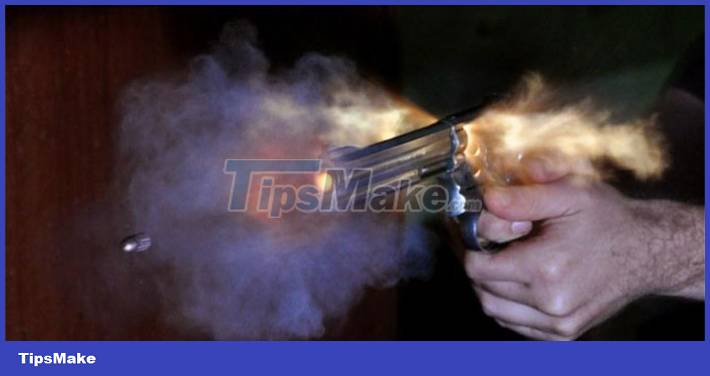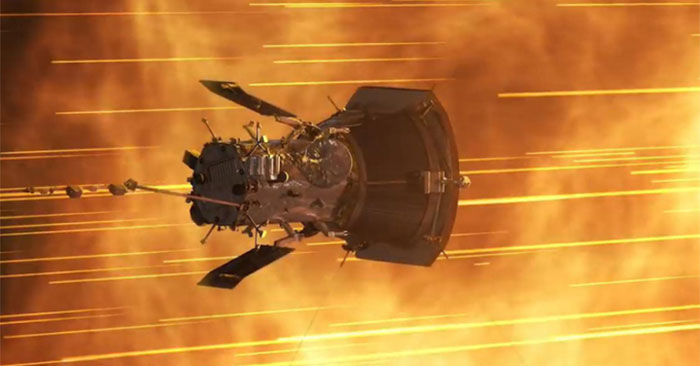How fast is the bullet fired from the gun?
Factors that affect the speed of a bullet fired from a gun are divided into two main categories: internal ballistics and external ballistics.
- Internal ballistics include propellant, bullet weight, barrel shape and length.
- External ballistics includes the forces that wind, gravity, and flight exert on the bullet as it moves through the air.
Most bullets are made from heavy metals such as lead, coated with copper to help them retain momentum.

When impacted by the gun's firing pin, a primer ignites the propellant, creating pressure that pushes the bullet forward. When moving toward the muzzle, the bullet creates a little friction due to rubbing against the barrel wall.
However, guns with longer barrels provide faster shots because the gas has more distance to increase velocity and the faster the bullet leaves the barrel. Therefore, a rifle is the gun with the fastest bullet firing speed. and the farthest it can fly is more than 3 km.

To produce such shots, rifle bullets are designed to be aerodynamic. Rifle bullets are longer, thinner, and heavier than handgun bullets. To keep the bullet spinning, thereby stabilizing its horizontal flight, spiral ridges were added to the barrel.
The above characteristics allow rifle bullets to be fired at extremely high speeds. For example, the bullets of a Remington 223 rifle leave the muzzle at a speed of up to 4,390 km/h, fast enough to fly across a distance equivalent to 11 football fields in one second.
Meanwhile, a bullet fired from a 9 mm Luger pistol has a speed of only 2,200 km/h, and will only travel half that distance in 1 second.
As soon as it left the muzzle, the bullet began to decelerate and fall due to the impact of air resistance, gravity and gyroscopic motion. The bullet will move very straight for a while, then begin to fall.
You should read it
- How to create bullet list in Excel
- How to Model Bullets in 3DS Max
- Do bullets fire?
- If struck by lightning when flying, is the bullet affected?
- How to Create a Bullet Point
- How to Create a Bullet Point in Microsoft Applications
- If shot, did you hear the first explosion or hit the previous bullet?
- The impressive moment when the bullet rushed out of the barrel
May be interested
- The world's most expensive telescope captures stunning views of the famous supernova remnant
 named sn 1987a, this is a supernova that occurs when a giant star runs out of fuel and collapses at the end of its life.
named sn 1987a, this is a supernova that occurs when a giant star runs out of fuel and collapses at the end of its life. - For the first time, a 'complete' human embryo has been created without the need for eggs or sperm
 scientists in israel have successfully created human embryos in the laboratory with only stem cells, without eggs or sperm. the results are shared in a report in the journal nature.
scientists in israel have successfully created human embryos in the laboratory with only stem cells, without eggs or sperm. the results are shared in a report in the journal nature. - The first animals appeared on Earth
 although comb jellyfish look like jellyfish, the comb jellyfish is a completely different creature.
although comb jellyfish look like jellyfish, the comb jellyfish is a completely different creature. - The smallest cat in the world, capable of distinguishing 1 billion different odors
 rusty spotted cat has an average size of about 35 - 48cm (excluding the tail), weighs only about 0.8 - 1.6kg, only half the weight of a common domestic cat.
rusty spotted cat has an average size of about 35 - 48cm (excluding the tail), weighs only about 0.8 - 1.6kg, only half the weight of a common domestic cat. - Discovered a new species of shark with human-like teeth
 australian scientists have discovered a new species of shark with a unique shape. according to the description, they have a large head, horns protruding from the eyes, spines in front of the dorsal fin and human-like teeth.
australian scientists have discovered a new species of shark with a unique shape. according to the description, they have a large head, horns protruding from the eyes, spines in front of the dorsal fin and human-like teeth. - The fastest man-made object in history, the speed reached 532,000 km/h
 parker solar, a spacecraft carrying a mission to study the sun, became the fastest man-made object in history with a speed of 532,000 km/h.
parker solar, a spacecraft carrying a mission to study the sun, became the fastest man-made object in history with a speed of 532,000 km/h.






 How powerful is the destructive force of the bullet?
How powerful is the destructive force of the bullet? How far is the bullet fired from underwater AK-47 guns?
How far is the bullet fired from underwater AK-47 guns? Close-up of bullet shattering when fired at 'fragile' pendulum system
Close-up of bullet shattering when fired at 'fragile' pendulum system What horrible thing happens when the body is hit by a bullet?
What horrible thing happens when the body is hit by a bullet? What is Bullet Journal?
What is Bullet Journal?